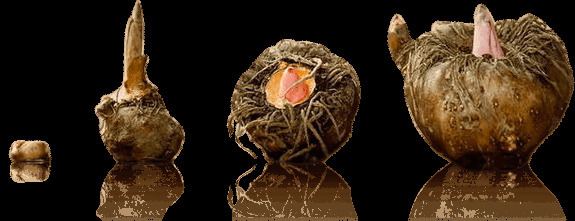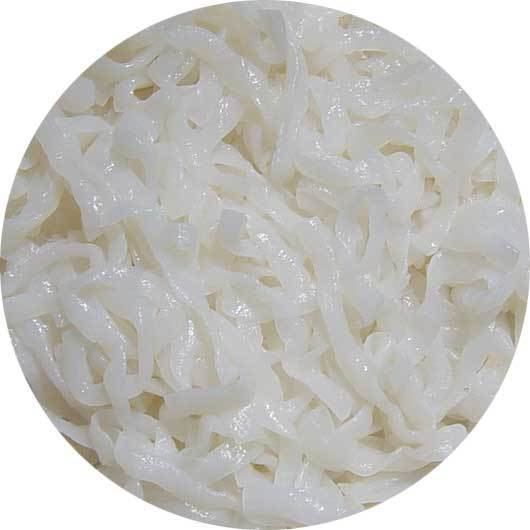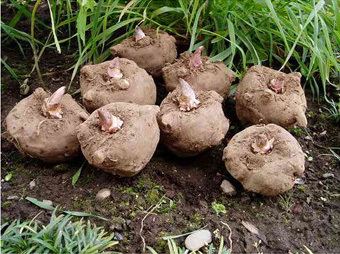Kingdom Plantae Family Araceae Scientific name Amorphophallus konjac Higher classification Zaminkand | Order Alismatales Genus Amorphophallus Rank Species | |
 | ||
Similar Glucomannan, Shirataki noodles, Greater burdock, Oden, Dashi | ||
Amorphophallus konjac bloom time lapse
Konjac ( /ˈkoʊnjæk/ KOHN-yak; Amorphophallus konjac; syn. A. rivieri; Japanese: 蒟蒻/菎蒻; こんにゃく; konnyaku; Korean: 곤약; gonyak; Chinese: 蒟蒻; pinyin: jǔruò), also known as konjak, konjaku, konnyaku potato, devil's tongue, voodoo lily, snake palm, or elephant yam (though this name is also used for A. paeoniifolius), is a plant of the genus Amorphophallus.
Contents
- Amorphophallus konjac bloom time lapse
- The konjac plant asia s secret weight loss marvel
- History
- Cultivation and use
- Japan and China
- Nutritional value
- Fruit jelly
- Choking risk
- Vegan seafood alternative
- Other uses
- References

It is native to warm subtropical to tropical eastern Asia, from Japan and China south to Indonesia (USDA hardiness Zone 6-11). It is a perennial plant, growing from a large corm up to 25 cm (10 in) in diameter. The single leaf is up to 1.3 m (4 ft) across, bipinnate, and divided into numerous leaflets. The flowers are produced on a spathe enclosed by a dark purple spadix up to 55 cm (22 in) long.

The food made from the corm of this plant is widely known in English by its Japanese name, konnyaku (yam cake), being cooked and consumed primarily in Japan. The two basic types of cake are white and black. Noodles are made from konnyaku, known as shirataki.

The corm of the konjac is often colloquially referred to as a yam, although it bears no marked relation to tubers of the family Dioscoreaceae.

The konjac plant asia s secret weight loss marvel
History
Wild forms grow naturally in Southeast Asia and China. Konjac has been known in Japan since the sixth century as a medicinal food, and it has been eaten for 1500 years. During the Edo Period, beginning in the early 17th century, the Japanese imported Konnyaku/Shirataki from China. In 1846, the book Konnyaku Hyakusen (100 recipes of Konnyaku) was published and demonstrates its popularity in Japan at that time.
Cultivation and use
Konjac is grown in China, Korea, Taiwan, Japan and southeast Asia for its large starchy corms, used to create a flour and jelly of the same name. It is also used as a vegan substitute for gelatin.
Japan and China
In Japanese cuisine, konjac (konnyaku) appears in dishes such as oden. It is typically mottled grey and firmer in consistency than most gelatins. It has very little taste; the common variety tastes vaguely like salt, usually with a slightly oceanic taste and smell (from the seaweed powder added to it; albeit other forms may omit the seaweed entirely). It is valued more for its texture than flavor.
Ito konnyaku (糸蒟蒻) is a type of Japanese food consisting of konjac cut into noodle-like strips. It is usually sold in plastic bags with accompanying water. It is often used in sukiyaki and oden. The name literally means "thread-konjac".
Japanese konnyaku is made by mixing konjac flour with water and limewater. Hijiki is often added for the characteristic dark color and flavor. Without additives for color, konjac is pale white. It is then boiled and cooled to solidify. Konjac made in noodle form is called shirataki and used in foods such as sukiyaki and gyudon.
Konjac is consumed in parts of China's Sichuan province; the corm is called moyu (Chinese: 魔芋; literally: "magical taro"), and the jelly is called "konjac tofu" (魔芋豆腐 móyù dòufu) or "snow konjac" (雪魔芋 xuě móyù).
Nutritional value
The dried corm of the konjac plant contains around 40% glucomannan gum. This polysaccharide makes konjac jelly highly viscous and may be responsible for many of its putative health benefits as used in traditional Chinese medicine, detoxification, tumour-suppression, blood stasis alleviation and phlegm liquefaction.
Konjac has almost no calories, but is very high in fiber. Thus, it is often used as a diet food. The Omikenshi Company has developed a process which mixes treated wood pulp with konjac; the resulting fiber-rich flour contains neither gluten nor fat, and almost no carbohydrates, and has just 60 calories a kilogram vis-à-vis 3,680 for wheat.
The dietary fiber from the corm of Amorphophallus konjac is used as a component of weight loss supplements. Konjac supplementation at modest levels has been shown to promote increased butyric acid through improved bowel flora ecology and increase bowel movements in constipated adults.
Fruit jelly
Konjac can also be made into a popular Asian fruit jelly snack, known variously in the United States as lychee cups (after a typical flavor and Nata de coco cube suspended in the gel) or konjac candy, usually served in bite-sized plastic cups.
Choking risk
Perhaps because of several highly publicized deaths and near-deaths in the San Francisco Bay Area among children and elderly caused by suffocation while eating konjac candy, the U.S. Food and Drug Administration (FDA) issued product warnings in 2001 and subsequent recalls in the United States and Canada.
Unlike gelatine and some other commonly used gelling agents, konjac fruit jelly does not melt readily in the mouth. Some products formed a gel strong enough such that only chewing, not tongue pressure or breathing pressure, could disintegrate the gel. Although the product is intended to be eaten by gently squeezing the gel's cup, a consumer could suck the product out with enough force to unintentionally lodge it in the trachea. Konjac fruit jelly was subsequently also banned in the European Union.
Some konjac jelly snacks are not of a size and consistency to pose any unusual choking risk, but are nonetheless affected by the government bans. Some products that remain in Asian markets have an increased size, unusual shape, and more delicate consistency than the round, plug-like gels that were associated with the choking incidents. The snacks usually have warning labels advising parents to make sure their children chew the jelly thoroughly before swallowing.
Japan's largest manufacturer of konjac snacks, MannanLife, temporarily stopped production of the jellies after a 21-month-old Japanese boy was revealed to have choked to death on a frozen MannanLife konjac jelly. 17 people died from choking on konjac between 1995 and 2008. MannanLife konjac jelly's packaging bag now shows a note to consumers, advising them to cut the product into smaller pieces before serving it to small children.
Vegan seafood alternative
Konjac corm powder is used as an ingredient in vegan alternative seafood products. It can be incorporated into animal-product-free versions of scallops, fish, prawns (shrimp), crab, etc. For Chinese cooking, thin strands of konjac gel can be used as substitute for shark fins when preparing an imitation version of the shark fin soup.
Other uses
Konjac can also be used for facial massage accessories which are currently popular in Korea and gaining popularity in the West. Most commonly this is through the use of a konjac sponge, which is unique in that it can be used on sensitive skin that may become easily irritated with more common exfoliating tools (such as a loofah or washcloth).
The product Lipozene is made from the konjac corm.
